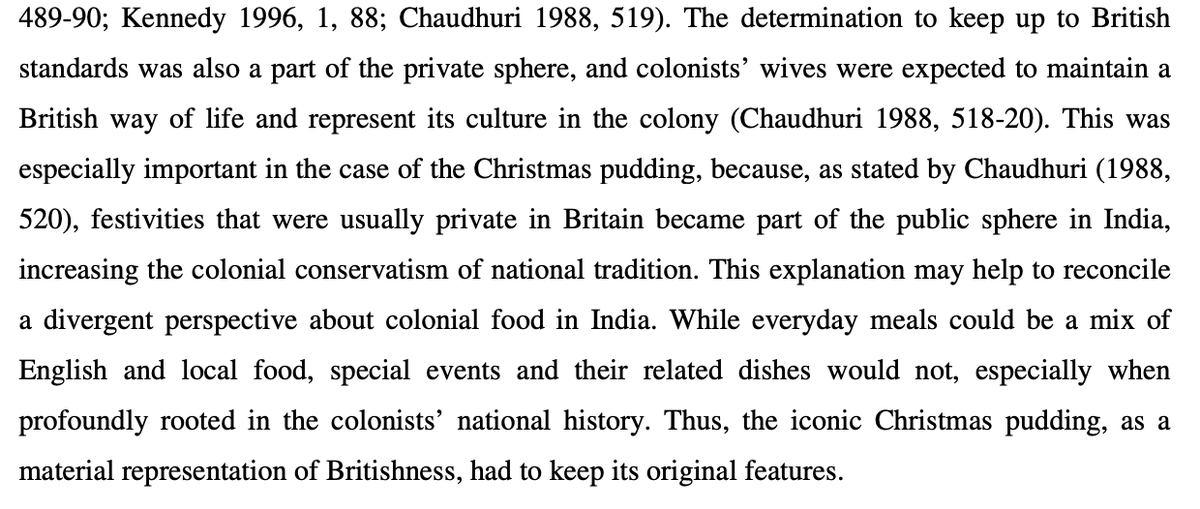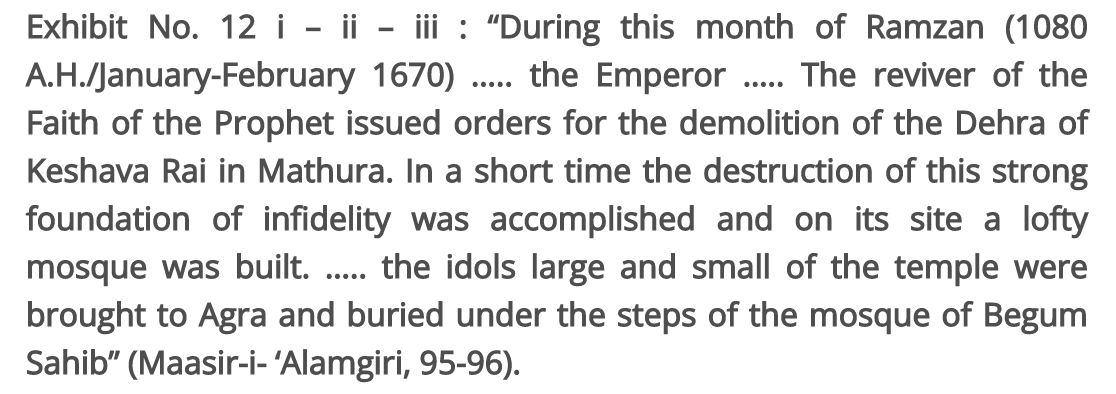
1
Many Hindus think Christmas is a time of good cheer & celebrate with Christmas pudding/fruitcake made with currants, raisins, candied peels & fruits soaked in brandy and rum. But this innocuous seeming pudding hides the sordid tale of Britain’s colonial imperialism & racism.
Many Hindus think Christmas is a time of good cheer & celebrate with Christmas pudding/fruitcake made with currants, raisins, candied peels & fruits soaked in brandy and rum. But this innocuous seeming pudding hides the sordid tale of Britain’s colonial imperialism & racism.

2
Christmas pudding was earlier called Empire Pudding. It was created by the British empire to show dominance across all its enslaved colonies. Designed as be a culinary symbol, it was a showcase of the consolidated power of the British Empire over its conquered territories.
Christmas pudding was earlier called Empire Pudding. It was created by the British empire to show dominance across all its enslaved colonies. Designed as be a culinary symbol, it was a showcase of the consolidated power of the British Empire over its conquered territories.

3
Aside from flour & beer, no other ingredients in the dish came from British soil. Empire Pudding was a showcase of misappropriated wealth of ingredients from across the colonies. It was to serve as a symbol of the ultimate tribute by the colonized.
Aside from flour & beer, no other ingredients in the dish came from British soil. Empire Pudding was a showcase of misappropriated wealth of ingredients from across the colonies. It was to serve as a symbol of the ultimate tribute by the colonized.

4
In 1924. the British Women's Patriotic league published a recipe for Empire Christmas Pudding using a teaspoon of ‘pudding spice' of coriander, caraway, cloves & other spices from India, fruit peel from South Africa, sugar from W. Indies, rum from Jamaica, Ceylon cinnamon, etc.
In 1924. the British Women's Patriotic league published a recipe for Empire Christmas Pudding using a teaspoon of ‘pudding spice' of coriander, caraway, cloves & other spices from India, fruit peel from South Africa, sugar from W. Indies, rum from Jamaica, Ceylon cinnamon, etc.

5
The recipe was a part of the marketing plan by the Empire Marketing Board (EMB), "to change consumer habits in Britain by encouraging the purchase of foods sourced in the dominions, colonies & territories of the empire," & boycott imports from non-Empire sources.

The recipe was a part of the marketing plan by the Empire Marketing Board (EMB), "to change consumer habits in Britain by encouraging the purchase of foods sourced in the dominions, colonies & territories of the empire," & boycott imports from non-Empire sources.


6
The EMB was created to popularize ‘imperial preferences’ & ‘publicize and educate' British consumers about empire goods. The EMB ‘helped' producers across the empire gain a market for their goods produced by enslaved natives

The EMB was created to popularize ‘imperial preferences’ & ‘publicize and educate' British consumers about empire goods. The EMB ‘helped' producers across the empire gain a market for their goods produced by enslaved natives


7
The book "The Hungry Empire" narrates how Empire Day celebrations were held in 1926, representatives from colonies came to London to make Empire Pudding. Ingredients were carried in by "turbaned Indian servants" and formally announced, before being added to a mixing bowl.
The book "The Hungry Empire" narrates how Empire Day celebrations were held in 1926, representatives from colonies came to London to make Empire Pudding. Ingredients were carried in by "turbaned Indian servants" and formally announced, before being added to a mixing bowl.

8
The ceremony ended with representatives coming together to give the pudding a collective ritual stir. It was captured on film and shown on newsreels across the country. Pudding making was thus "a powerful ritual that consolidated the national and imperial into one community."
The ceremony ended with representatives coming together to give the pudding a collective ritual stir. It was captured on film and shown on newsreels across the country. Pudding making was thus "a powerful ritual that consolidated the national and imperial into one community."

9
The British popularized such recipes across India. The process of steaming the pudding in muslin cloth is mentioned in the racist book, “The Memsahib's Manual” (Thacker, Spink & Co., 1914), which offered advice about living in colonized India.
The British popularized such recipes across India. The process of steaming the pudding in muslin cloth is mentioned in the racist book, “The Memsahib's Manual” (Thacker, Spink & Co., 1914), which offered advice about living in colonized India.

10
“Sahib went to the kitchen with a stick in his hand to find the reason for a long pause in dinner. On seeing him the cook took fright & ran off, with plum pudding tied up in the end of his "dhoti," he had been boiling it in one end while the other was wrapped ‘round himself!"
“Sahib went to the kitchen with a stick in his hand to find the reason for a long pause in dinner. On seeing him the cook took fright & ran off, with plum pudding tied up in the end of his "dhoti," he had been boiling it in one end while the other was wrapped ‘round himself!"

11
This excerpt tells us how the British found plenty of humor & enjoyment in thrashing their Hindu servants. Their native dress & habits were a cause for ridicule & condemnation. The Indian slaves were not "civilized" enough to understand the nuances of British cooking.
This excerpt tells us how the British found plenty of humor & enjoyment in thrashing their Hindu servants. Their native dress & habits were a cause for ridicule & condemnation. The Indian slaves were not "civilized" enough to understand the nuances of British cooking.

12
This very same symbol of India's colonization - Empire Pudding was popularized by Gymkhana clubs, Anglo-Indians, Indian Catholics & Parsis according to culinary researcher Ragini Kashyap of Third Culture Cooks. It became an integral part of Christmas celebrations in India.
This very same symbol of India's colonization - Empire Pudding was popularized by Gymkhana clubs, Anglo-Indians, Indian Catholics & Parsis according to culinary researcher Ragini Kashyap of Third Culture Cooks. It became an integral part of Christmas celebrations in India.
13
Just 2 decades before the "Empire Pudding", more than 10 million Indians starved to death in the great Indian famine of 1899-1900, caused by the unrelenting exploitation by British of the country's food resources. It was a recipe designed to dance on Indian corpses.
Just 2 decades before the "Empire Pudding", more than 10 million Indians starved to death in the great Indian famine of 1899-1900, caused by the unrelenting exploitation by British of the country's food resources. It was a recipe designed to dance on Indian corpses.

14
Even today, Christmas Pudding recipes are breathlessly shared by Indian media & restaurants to "celebrate" this symbol of our own enslavement & colonization. We choose to be ignorant about how Christmas was an event for British to celebrate colonization & oppression of India.
Even today, Christmas Pudding recipes are breathlessly shared by Indian media & restaurants to "celebrate" this symbol of our own enslavement & colonization. We choose to be ignorant about how Christmas was an event for British to celebrate colonization & oppression of India.

• • •
Missing some Tweet in this thread? You can try to
force a refresh


































